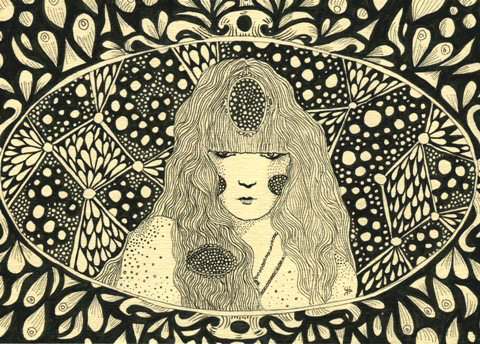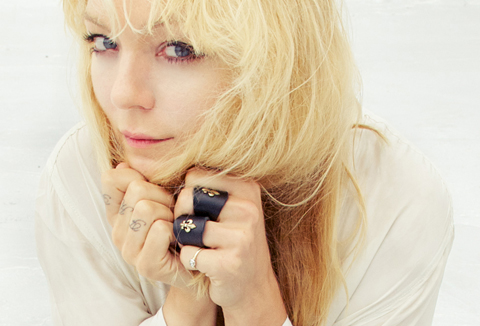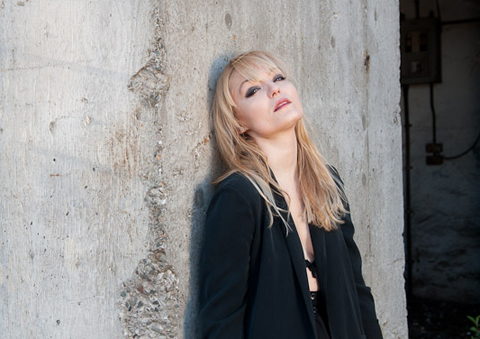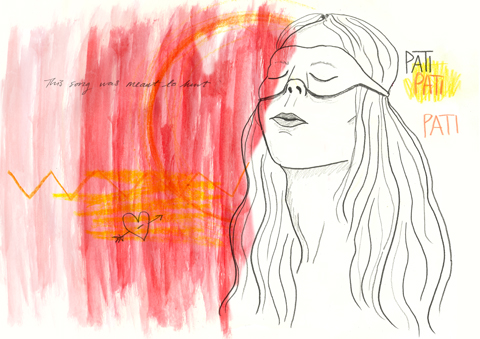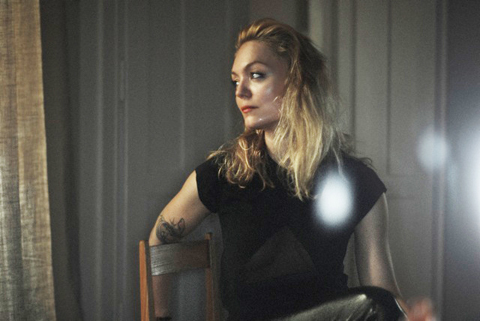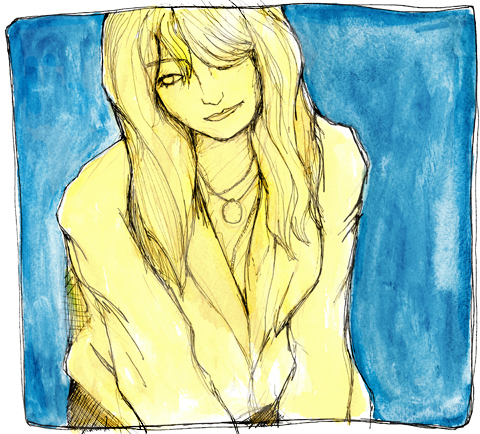 cheap medications photo by Julian Abrams” width=”480″ height=”640″ class=”aligncenter size-full wp-image-18752″ />
cheap medications photo by Julian Abrams” width=”480″ height=”640″ class=”aligncenter size-full wp-image-18752″ />
Conformist
Blythe house, prescription once a colossal bustling post office savings bank full of clerks’ activity now stands (almost) empty as a memorial to times past. Currently the home of not only the Victoria and Albert Archives but the British and Science Museum it double doors remain closed even to those who work in the museums. It takes a special request to get inside these vaults.

Luckily for a limited time (these doors swing back tight at the end of June) the V&A section has had its doors pushed slightly ajar by fashion curator Judith Clark and psychoanalyst Adam Philips. Together they have curated a delicate show examining ideas and understandings of dress alongside concepts of preservation in the midst of a vast archive that documents humanity’s progression.

Essential
Titled The Concise Dictionary of A Dress, the exhibition consists of 11 exhibits nestling amongst the archives, taking up position in the nooks and crannies of the ghostly building. The audience is shepherded silently though the sections of the building we were allowed to see, at times overwhelmed by the space and the delicate nature of the objects it protects. Eyes were all too often caught by the wondrous treasures awaiting selection by the V&A curators, their position elevated from number x of an extensive hoard into object A indicative of the human condition.

11 exhibits accompanied by 11 pieces of card form a mini-lexicon of dress (a concise representation of ideas of what it is to ‘dress’). Is it as comfortable suggests … or do you find yourself agreeing with Loose? Or do the words fall flat?
Armoured
Comfortable
Conformist
Creased
Essential
Fashionable
Loose
Measured
Plain
Pretentious
Tight

Words and their meanings can provide a point of conflict: at times the words on the card and the image of dress produced a harmonious moment of why people chose particular items of dress. In this moment the dictionary of a dress becomes clear as the exhibition mirrors the dictionary’s almost circular nature of providing two meanings for one word.
The curators have invited the audience into a hidden world; the vast depths of the museum. The audiences’ eye drawn to objects not in the exhibition but whose presence demands attention: Why is it there? Why did they choose this room or that cupboard? Can meanings be created between the juxtaposition of dress and the objects in the room?

A weekly definition taken from the website: MEASURED 1. Against chaos; a way of thinking about disarray; calculated excess. 2. The fitted as fitting. 3. Proportion as the mother of virtue. 4. The milder ecstasies of the considered. 5. Contained by the idea of containment.
The word and their phrases present one idea of what it is you are viewing, whilst the objects potentially visualise and neuter simultaneously them. The sentences add conflict as they embellish the meaning of the single word and the idea of why we dress, collect and preserve.

No word is mealy a word, it becomes heavy through each individual understanding of it’s context. Each interpretation of the exhibits arrived upon by our unique thought processes formed by our own experiences. It is an oddly lonely experience wandering though the locked archives looking at how meaning is embedded into objects. Can meanings be created from the idea that a function of the archive is personal, an act of preservation and eventually historical.
Creased the final exhibit presented a Junya Watanabe dress behind the bars of an old coal bunker open to the outside world. The end mimics the beginning (the first exhibit high on the roof stands a ghostly gown open to the elements, it’s resin skeleton delicate in the glare and heat of the sun) two decisions that scream against the museums usual desire to keep everything hidden, safe and in temperature controlled room to ensure the objects preservation.

Armoured
Seen against the sky scape of London, the resin dress showed just how delicate the human body, our sense of dress and concepts of who we are can be against the hard bustling ever moving city.
Take yourself on a guided walk through an unseen section of our national museums, question the ideas of preservation and the difference between the museum’s archive and your personal ‘hoard’
Watch the trailer here: the_concise_dictionary_of_dress_trailer
Trailer: The Concise Dictionary of a Dress
 sales photo by Julian Abrams” width=”480″ height=”640″ class=”aligncenter size-full wp-image-18752″ />
sales photo by Julian Abrams” width=”480″ height=”640″ class=”aligncenter size-full wp-image-18752″ />
Conformist
Blythe House, once a colossal bustling post office savings bank full of clerks’ activity now stands (almost) empty as a memorial to times past. Currently the home of not only the Victoria and Albert Archives but the British and Science Museum it double doors remain closed even to those who work in the museums. It takes a special request to get inside these vaults.

Luckily for a limited time (these doors swing back tight at the end of June) the V&A section has had its doors pushed slightly ajar by fashion curator Judith Clark and psychoanalyst Adam Philips. Together they have curated a delicate show examining ideas and understandings of dress alongside concepts of preservation in the midst of a vast archive that documents humanity’s progression.

Essential
Titled The Concise Dictionary of a Dress, the exhibition consists of 11 exhibits nestling amongst the archives, taking up position in the nooks and crannies of the ghostly building. The audience is shepherded silently though the sections of the building we were allowed to see, at times overwhelmed by the space and the delicate nature of the objects it protects. Eyes were all too often caught by the wondrous treasures awaiting selection by V&A curators, their position elevated from number x of an extensive hoard into object A indicative of the human condition.

11 exhibits accompanied by 11 pieces of card form a mini-lexicon of dress (a concise representation of ideas of what it is to ‘dress’). Is it as comfortable suggests … or do you find yourself agreeing with Loose? Or do the words fall flat?
Armoured
Comfortable
Conformist
Creased
Essential
Fashionable
Loose
Measured
Plain
Pretentious
Tight

Words and their meanings can provide a point of conflict: at times the words on the card and the image of dress produced a harmonious moment of why people chose particular items of dress. In this moment the dictionary of a dress becomes clear as the exhibition mirrors the dictionary’s almost circular nature of providing two meanings for one word.
The curators have invited the audience into a hidden world; the vast depths of the museum. The audiences’ eye drawn to objects not in the exhibition but whose presence demands attention: Why is it there? Why did they choose this room or that cupboard? Can meanings be created between the juxtaposition of dress and the objects in the room?

A weekly definition taken from the website: MEASURED 1. Against chaos; a way of thinking about disarray; calculated excess. 2. The fitted as fitting. 3. Proportion as the mother of virtue. 4. The milder ecstasies of the considered. 5. Contained by the idea of containment.
The word and their phrases present one idea of what it is you are viewing, whilst the objects potentially visualise and neuter simultaneously them. The sentences add conflict as they embellish the meaning of the single word and the idea of why we dress, collect and preserve.

No word is mealy a word, it becomes heavy through each individual understanding of it’s context. Each interpretation of the exhibits arrived upon by our unique thought processes formed by our own experiences. It is an oddly lonely experience wandering though the locked archives looking at how meaning is embedded into objects. Can meanings be created from the idea that a function of the archive is personal, an act of preservation and eventually historical.
Creased the final exhibit presented a Junya Watanabe dress behind the bars of an old coal bunker open to the outside world. The end mimics the beginning (the first exhibit high on the roof stands a ghostly gown open to the elements, it’s resin skeleton delicate in the glare and heat of the sun) two decisions that scream against the museums usual desire to keep everything hidden, safe and in temperature controlled room to ensure the objects preservation.

Armoured
Seen against the sky scape of London, the resin dress showed just how delicate the human body, our sense of dress and concepts of who we are can be against the hard bustling ever moving city.
Take yourself on a guided walk through an unseen section of our national museums, question the ideas of preservation and the difference between the museum’s archive and your personal ‘hoard.’
Watch the trailer here: The Concise Dictionary of a Dress
 approved photo by Julian Abrams” width=”480″ height=”640″ class=”aligncenter size-full wp-image-18752″ />
approved photo by Julian Abrams” width=”480″ height=”640″ class=”aligncenter size-full wp-image-18752″ />
Conformist
Blythe House, once a colossal bustling post office savings bank full of clerks’ activity now stands (almost) empty as a memorial to times past. Currently the home of not only the Victoria and Albert Archives but the British and Science Museum it double doors remain closed even to those who work in the museums. It takes a special request to get inside these vaults.

Luckily for a limited time (these doors swing back tight at the end of June) the V&A section has had its doors pushed slightly ajar by fashion curator Judith Clark and psychoanalyst Adam Philips. Together they have curated a delicate show examining ideas and understandings of dress alongside concepts of preservation in the midst of a vast archive that documents humanity’s progression.

Essential
Titled The Concise Dictionary of a Dress, the exhibition consists of 11 exhibits nestling amongst the archives, taking up position in the nooks and crannies of the ghostly building. The audience is shepherded silently though the sections of the building we were allowed to see, at times overwhelmed by the space and the delicate nature of the objects it protects. Eyes were all too often caught by the wondrous treasures awaiting selection by V&A curators, their position elevated from number x of an extensive hoard into object A indicative of the human condition.

11 exhibits accompanied by 11 pieces of card form a mini-lexicon of dress (a concise representation of ideas of what it is to ‘dress’). Is it as comfortable suggests … or do you find yourself agreeing with Loose? Or do the words fall flat?
Armoured
Comfortable
Conformist
Creased
Essential
Fashionable
Loose
Measured
Plain
Pretentious
Tight

Words and their meanings can provide a point of conflict: at times the words on the card and the image of dress produced a harmonious moment of why people chose particular items of dress. In this moment the dictionary of a dress becomes clear as the exhibition mirrors the dictionary’s almost circular nature of providing two meanings for one word.
The curators have invited the audience into a hidden world; the vast depths of the museum. The audiences’ eye drawn to objects not in the exhibition but whose presence demands attention: Why is it there? Why did they choose this room or that cupboard? Can meanings be created between the juxtaposition of dress and the objects in the room?

A weekly definition taken from the website: MEASURED 1. Against chaos; a way of thinking about disarray; calculated excess. 2. The fitted as fitting. 3. Proportion as the mother of virtue. 4. The milder ecstasies of the considered. 5. Contained by the idea of containment.
The word and their phrases present one idea of what it is you are viewing, whilst the objects potentially visualise and neuter simultaneously them. The sentences add conflict as they embellish the meaning of the single word and the idea of why we dress, collect and preserve.

No word is mealy a word, it becomes heavy through each individual understanding of it’s context. Each interpretation of the exhibits arrived upon by our unique thought processes formed by our own experiences. It is an oddly lonely experience wandering though the locked archives looking at how meaning is embedded into objects. Can meanings be created from the idea that a function of the archive is personal, an act of preservation and eventually historical.
Creased the final exhibit presented a Junya Watanabe dress behind the bars of an old coal bunker open to the outside world. The end mimics the beginning (the first exhibit high on the roof stands a ghostly gown open to the elements, it’s resin skeleton delicate in the glare and heat of the sun) two decisions that scream against the museums usual desire to keep everything hidden, safe and in temperature controlled room to ensure the objects preservation.

Armoured
Seen against the sky scape of London, the resin dress showed just how delicate the human body, our sense of dress and concepts of who we are can be against the hard bustling ever moving city.
Take yourself on a guided walk through an unseen section of our national museums, question the ideas of preservation and the difference between the museum’s archive and your personal ‘hoard.’
Watch the trailer here: The Concise Dictionary of a Dress
 abortion photo by Julian Abrams” width=”480″ height=”640″ class=”aligncenter size-full wp-image-18752″ />
abortion photo by Julian Abrams” width=”480″ height=”640″ class=”aligncenter size-full wp-image-18752″ />
Conformist
Blythe House, patient once a colossal bustling post office savings bank full of clerks’ activity now stands (almost) empty as a memorial to times past. Currently the home of not only the Victoria and Albert Archives but the British and Science Museum it double doors remain closed even to those who work in the museums. It takes a special request to get inside these vaults.
 viagra photo by Julian Abrams” width=”480″ height=”640″ class=”aligncenter size-full wp-image-18750″ />
viagra photo by Julian Abrams” width=”480″ height=”640″ class=”aligncenter size-full wp-image-18750″ />
Luckily for a limited time (these doors swing back tight at the end of June) the V&A section has had its doors pushed slightly ajar by fashion curator Judith Clark and psychoanalyst Adam Philips. Together they have curated a delicate show examining ideas and understandings of dress alongside concepts of preservation in the midst of a vast archive that documents humanity’s progression.

Essential
Titled The Concise Dictionary of a Dress, the exhibition consists of 11 exhibits nestling amongst the archives, taking up position in the nooks and crannies of the ghostly building. The audience is shepherded silently though the sections of the building we were allowed to see, at times overwhelmed by the space and the delicate nature of the objects it protects. Eyes were all too often caught by the wondrous treasures awaiting selection by V&A curators, their position elevated from number x of an extensive hoard into object A indicative of the human condition.

11 exhibits accompanied by 11 pieces of card form a mini-lexicon of dress (a concise representation of ideas of what it is to ‘dress’). Is it as comfortable suggests … or do you find yourself agreeing with Loose? Or do the words fall flat?
Armoured
Comfortable
Conformist
Creased
Essential
Fashionable
Loose
Measured
Plain
Pretentious
Tight

Words and their meanings can provide a point of conflict: at times the words on the card and the image of dress produced a harmonious moment of why people chose particular items of dress. In this moment the dictionary of a dress becomes clear as the exhibition mirrors the dictionary’s almost circular nature of providing two meanings for one word.
The curators have invited the audience into a hidden world; the vast depths of the museum. The audiences’ eye drawn to objects not in the exhibition but whose presence demands attention: Why is it there? Why did they choose this room or that cupboard? Can meanings be created between the juxtaposition of dress and the objects in the room?

A weekly definition taken from the website: MEASURED 1. Against chaos; a way of thinking about disarray; calculated excess. 2. The fitted as fitting. 3. Proportion as the mother of virtue. 4. The milder ecstasies of the considered. 5. Contained by the idea of containment.
The word and their phrases present one idea of what it is you are viewing, whilst the objects potentially visualise and neuter simultaneously them. The sentences add conflict as they embellish the meaning of the single word and the idea of why we dress, collect and preserve.

No word is mealy a word, it becomes heavy through each individual understanding of it’s context. Each interpretation of the exhibits arrived upon by our unique thought processes formed by our own experiences. It is an oddly lonely experience wandering though the locked archives looking at how meaning is embedded into objects. Can meanings be created from the idea that a function of the archive is personal, an act of preservation and eventually historical.
Creased the final exhibit presented a Junya Watanabe dress behind the bars of an old coal bunker open to the outside world. The end mimics the beginning (the first exhibit high on the roof stands a ghostly gown open to the elements, it’s resin skeleton delicate in the glare and heat of the sun) two decisions that scream against the museums usual desire to keep everything hidden, safe and in temperature controlled room to ensure the objects preservation.

Armoured
Seen against the sky scape of London, the resin dress showed just how delicate the human body, our sense of dress and concepts of who we are can be against the hard bustling ever moving city.
Take yourself on a guided walk through an unseen section of our national museums, question the ideas of preservation and the difference between the museum’s archive and your personal ‘hoard.’
Watch the trailer here: The Concise Dictionary of a Dress

Illustration by Emma Rockett, viagra dosage from her graduate work
So on Sunday it was down to the beautifully named Anastasia Arden-Maccabee to open the Edinburgh College of Art show on Sunday. Her fresh colour palette of a variety of pastel colours brought welcome respite from a lot of monochrome collections at Graduate Fashion Week.


Models were draped in lightweight fabrics that skimmed the knee and gave shapely silhouettes. Intricate flaps and folds had created the illusion of origami.
Making more literal use of Origami techniques was Eliza Borkowska, whose models appeared like futuristic sirens. Defining creases and thick lines shaped short dresses into artistic creations, of which Martin Margiela could even put his name to.


Charlotte Helyar’s collection was one of the most innovative and enjoyable of the week – enjoyable because it was hilarious to watch everybody scrabble for their 3D glasses as her first model appeared.

She’d made use of 3D print techniques, see – and applied them to floor-length dresses and floaty, flattering tops.


Illustration by Charlotte Helyar, from her graduate work
Emma Rockett’s collection screamed English heritage, another theme we’ve seen a lot of this week. Emma had executed it with panache. Traditional tailoring techniques were employed for candy-stripe blazers and high-waisted skirts, accessorised with up-side-down Boater hats and vibrant pink stockings.

Illustration by Emma Rockett, from her graduate work
It was Lisa Leissos who presented the most demure, sophisticated collection of this bunch. Her all-red collection of maxi-dresses and knitwear had real flare, and deeper reds were used for some classic knitwear. Sweeping lines gave the collection a very modern feel.


Illustration by Lisa Leissos, from her graduate work
A refreshing change came in the form of Alistair Nimmo’s mermaid-like goddesses. Flamenco-style fringing on skirt waists and hems created this desired effect, but a palette of nude, aqua and navy kept it contemporary and grown-up. Bustiers and jackets with circles at the chest also gave the collection a sexy edge.

Alexander White’s sweetheart necklines and tulip skirts also oozed sex appeal, while harsh tailored trouser suits contrasted this. Alexander has used an interesting technique for skirts, which had an anatomical look – God knows what it was, but I suspect it may have been organza or wool (!) weaved together in organic forms.

I also loved Isabel Wong’s layered organza jackets and dresses with olive green and nude colours; Louise Manson’s bohemian-inspired collection with synched waists, blouson sleeves and tiny knitted caps; and Louise Holgrove’s exaggerated paper-bag waists and sumptuous, heavy materials.

It was to Qi Zhang to close the show, and while I really liked her modernist collection, I didn’t think it was the best. Models wore lampshade-shaped helmets which were just about translucent enough for them to see, and her patchwork ensembles inspired by her mother made great use of a variety of materials.

While Edinburgh may not have had an outrageous show-stopper, it had technique, innovation and originality aplenty.
Splendid!
All photographs by Matt Bramford
 sildenafil photo by Julian Abrams” width=”480″ height=”640″ class=”aligncenter size-full wp-image-18752″ />
sildenafil photo by Julian Abrams” width=”480″ height=”640″ class=”aligncenter size-full wp-image-18752″ />
Conformist
Blythe House, once a colossal bustling post office savings bank full of clerks’ activity now stands (almost) empty as a memorial to times past. Currently the home of not only the Victoria and Albert Archives but the British and Science Museum it double doors remain closed even to those who work in the museums. It takes a special request to get inside these vaults.

Luckily for a limited time (these doors swing back tight at the end of June) the V&A section has had its doors pushed slightly ajar by fashion curator Judith Clark and psychoanalyst Adam Philips. Together they have curated a delicate show examining ideas and understandings of dress alongside concepts of preservation in the midst of a vast archive that documents humanity’s progression.

Essential
Titled The Concise Dictionary of a Dress, the exhibition consists of 11 exhibits nestling amongst the archives, taking up position in the nooks and crannies of the ghostly building. The audience is shepherded silently though the sections of the building we were allowed to see, at times overwhelmed by the space and the delicate nature of the objects it protects. Eyes were all too often caught by the wondrous treasures awaiting selection by V&A curators, their position elevated from number x of an extensive hoard into object A indicative of the human condition.

11 exhibits accompanied by 11 pieces of card form a mini-lexicon of dress (a concise representation of ideas of what it is to ‘dress’). Is it as comfortable suggests … or do you find yourself agreeing with Loose? Or do the words fall flat?
Armoured
Comfortable
Conformist
Creased
Essential
Fashionable
Loose
Measured
Plain
Pretentious
Tight

Words and their meanings can provide a point of conflict: at times the words on the card and the image of dress produced a harmonious moment of why people chose particular items of dress. In this moment the dictionary of a dress becomes clear as the exhibition mirrors the dictionary’s almost circular nature of providing two meanings for one word.
The curators have invited the audience into a hidden world; the vast depths of the museum. The audiences’ eye drawn to objects not in the exhibition but whose presence demands attention: Why is it there? Why did they choose this room or that cupboard? Can meanings be created between the juxtaposition of dress and the objects in the room?

A weekly definition taken from the website: MEASURED 1. Against chaos; a way of thinking about disarray; calculated excess. 2. The fitted as fitting. 3. Proportion as the mother of virtue. 4. The milder ecstasies of the considered. 5. Contained by the idea of containment.
The word and their phrases present one idea of what it is you are viewing, whilst the objects potentially visualise and neuter simultaneously them. The sentences add conflict as they embellish the meaning of the single word and the idea of why we dress, collect and preserve.

No word is mealy a word, it becomes heavy through each individual understanding of it’s context. Each interpretation of the exhibits arrived upon by our unique thought processes formed by our own experiences. It is an oddly lonely experience wandering though the locked archives looking at how meaning is embedded into objects. Can meanings be created from the idea that a function of the archive is personal, an act of preservation and eventually historical.
Creased the final exhibit presented a Junya Watanabe dress behind the bars of an old coal bunker open to the outside world. The end mimics the beginning (the first exhibit high on the roof stands a ghostly gown open to the elements, it’s resin skeleton delicate in the glare and heat of the sun) two decisions that scream against the museums usual desire to keep everything hidden, safe and in temperature controlled room to ensure the objects preservation.

Armoured
Seen against the sky scape of London, the resin dress showed just how delicate the human body, our sense of dress and concepts of who we are can be against the hard bustling ever moving city.
Take yourself on a guided walk through an unseen section of our national museums, question the ideas of preservation and the difference between the museum’s archive and your personal ‘hoard.’
Watch the trailer here: The Concise Dictionary of a Dress

Amelia’s Magazine came across Anka Dabrowska’s exquisite work whilst perusing Payne Shurvell’s Bright and Guilty Place Exhibition (see Amelia’s Magazine review here). Anka’s drawings result from frequent fact finding missions to Poland’s captial, sales Warsaw. These delicate graphite studies (complete with uncontrolled graffiti marks) of the city’s geographical elements draw attention to the multiple ways one’s presence can inhabit a city. Amelia’s Magazine interviewed Anka to discuss the relationship played out in her work between Warsaw and memory.
How does the idea of “disparity between one’s personal relationship to, generic and the collective memory, rx of a given place” feed into your practice?
My work is about my personal experience of a specific place but it’s not exclusive, it lends itself to collective memory of a given place. Autobiography is represented indirectly or in fragments. The audiences faced with my work bring to it their own experiences of the city, whether it is Hackney estates, kiosks or any other aspects of urban living. My projects are made with specific spaces in mind, the idea grows from the experience of the city and how people live and enjoy public/private spaces.

How does your depiction of Warsaw in the drawings, relate to your artistic practice involving ‘fact finding missions’.
My practice concerns merging ideas of memory and imagination in relation to my upbringing in Warsaw. Domestic and urban landscape is a key focus of my work. Warsaw is somewhere to which I return again and again for inspiration.
I left Warsaw age 13 and moved with my parents and sister to Doha, Qatar in Middle East. This was a huge culture shock for me! I went to international school there where I had to learn quickly how to speak English. I’ve always known that I wanted to make art, to be an artist. After completing my A levels in Doha I applied for scholarships in the UK. I received a scholarship from Oxfordshire School of Art. I therefore left home age 18 and moved to England by myself which yet again was another culture shock!
My practice is solely based on my early experience of growing up in Warsaw’s tower blocks. ‘Fact finding missions’ are about returning to my hometown in order to re-experience these places, document them as they are today and translate this experience into new work (ongoing project). There is an intrinsic connection between a work of art and the environment in which it was created. How I grew up has an enormous influence on the way that I make art now.
Drawing is the foundation of my practice. I see all of my work as drawing or as extension of drawing – whether it is drawing on paper, 3-D object or installation.

Why did you decide to document this relationship through pencil and paper?
My work evolves naturally where it takes me on a journey. I don’t plan my works/ what I am going to draw or what mediums I am going to use. It evolves through experimentation and constant making. It feels right when it’s right, you can’t force these thing. Ideas about making art usually come purely by chance. I am a person who always has to do something. If I cannot do anything, I’m in a very bad way. But really I’m always working on something. And I always want to work too.

What is the relation in the drawings between the graphite pencil and the marks of spray painted graffiti?
Graffiti becomes another beautiful mark-making tool, but it also relates to the urban environment of the city. There is a wonderful relationship between the fine and very controlled line of graphite pencil and almost ‘hard to control’ mark made using spray paint. Graffiti tags are signatures that re-mark the territories and add meanings to the city.

How did the 3D models develop from the illustrations??
Yet, again they just happened one day through experimentation. I see them as extension of my drawing/3-D drawing. I actively collect materials that inspire me but also materials that relate to urban environment. I incorporate my own photographs of Warsaw neighbourhoods to give the works an element of realism and use collage technique spontaneously to create these structures/3-D drawings. I use these various found materials for their textures and colours and see them as yet another mark-making tools. Fabricated from cheap, trashy materials that, like ready-mades, reveal the vestiges of their earlier use, in some places only loosely attached, in others taped together, these pieces are characterized by an extreme fragility.
In most of my works overlaps occur between drawing, sculpture, photography and installation-these are artworks composed of independent elements of information, which in the process of relating to each other generate new meanings.

Could you explain your description of the buildings in Warsaw as claustrophobic?
My experience of living in tower blocks have been claustrophobic due to small living spaces and large numbers of inhabitants. There was never enough space to play, to study, or to just be alone. Most of my 3-D structures correspond to the blocks of flats I was living in at the time.
Because I left Warsaw and moved to Middle East then England I have a constant feeling of being inside and outside, a native and a foreigner. I think it is this sense of in-between-ness, more than the experience of living in blocks of flats that shapes my art practice. The distance allows me to think dialectically about the beauty and tragedy of my surroundings.

What was your experience of studying at Northumbria University?
My two-year part-time MA in Fine Art course enabled me to have an uninterrupted period of focusing solely on my work, experimenting with drawing, sculpture, reading and researching. Unlike London-based MA courses, where groups are too large, my course of 12 people enabled intimate environment for critical discussion, which to me was most valid aspect of that time. However, being proper city girl, I always new deep in my heart that London was place for me! After my MA and one year working at the BALTIC Centre for Contemporary Art I moved here in 2004 and fell in love with the city. London for me feels like true home, more so than any other city I live in!
Which artists or illustrators inspire your work either now or at university?
I find my inspiration from cities, day to day observations of urban living (sitting in coffee shops, making notes in sketchbook, walking/cycling through city). I also find music, literature and film has more inspiration for my practice. I do however visit a lot of exhibitions, a recent show I found very refreshing, inspiring and playful was the Whitechapel Gallery show of Rachel Harrison ‘Conquest of the Useless’.

When did you first pick up a pencil?
Childhood, I always drew from as early as I remember…drawing is something I do all the time, it’s like another language, way of communicating, but it’s also our prime way of communicating, everyone can draw.
Have any writers inspired you on the subject of Memory?
Recent books that inspired me:
1. ‘Estates’, Lynsey Hanley
2. ‘Home’, Alison Blunt & Robyn Dowling
3. ‘Architecture of Happiness’, Alain de Botton
4. ‘Wanderlust- A History of Walking ’, Rebecca Solnit
5. ‘Geography of Home’, Akiko Busch

Where did the idea to draw on paper bags come from? How do you decide what to draw?
One day I picked up a paper bag on the street and scribbled something on it. I got really excited about this new ‘canvas’. It gave me something more than just blank paper to work. Paper bags with their endless forms, colours and textures provided and offered new meanings and possibilities. For me communism meets consumerism in these quirky drawings.
What were the ideas behind the Block House Exhibition?
‘Blockhouse’ exhibition was conceived by Jealous Gallery, Crouch End, London. They wanted to showcase mine and Jeni Snell’s work in a small environment. Therefore my installation become almost like one big sculpture made up of more than 40 3-D structures depicting Warsaw’s kiosks and tower blocks. A cityscape.

A Bright and Guilty Place continues until 24th July 2010.
Written by Sally Mumby-Croft on Tuesday July 6th, 2010 2:56 pm
Categories ,A bright and guilty place, ,Anka Dabrowska, ,Baltic, ,drawing, ,graffiti, ,illustration, ,Northumbria, ,Payne Shurvell, ,Warsaw
Similar Posts:






















 cheap
cheap






























